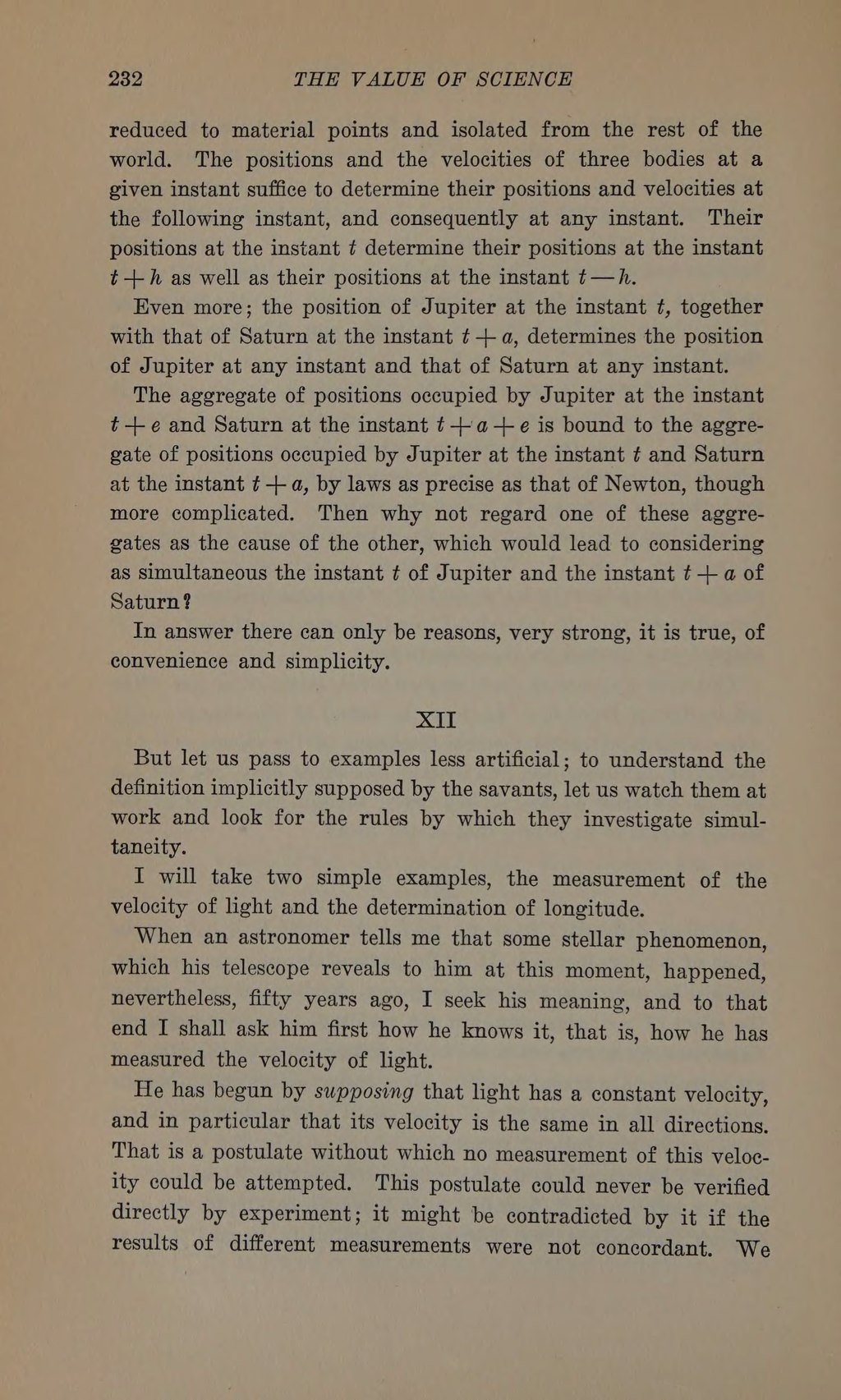reduced to material points and isolated from the rest of the world. The positions and the velocities of three bodies at a given instant suffice to determine their positions and velocities at the following instant, and consequently at any instant. Their positions at the instant determine their positions at the instant as well as their positions at the instant .
Even more; the position of Jupiter at the instant , together with that of Saturn at the instant , determines the position of Jupiter at any instant and that of Saturn at any instant
The aggregate of positions occupied by Jupiter at the instant and Saturn at the instant is bound to the aggregate of positions occupied by Jupiter at the instant and Saturn at the instant , by laws as precise as that of Newton, though more complicated. Then why not regard one of these aggregates as the cause of the other, which would lead to considering as simultaneous the instant of Jupiter and the instant of Saturn?
In answer there can only be reasons, very strong, it is true, of convenience and simplicity.
XII
But let us pass to examples less artificial; to understand the definition implicitly supposed by the savants, let us watch them at work and look for the rules by which they investigate simultaneity.
I will take two simple examples, the measurement of the velocity of light and the determination of longitude.
When an astronomer tells me that some stellar phenomenon, which his telescope reveals to him at this moment, happened, nevertheless, fifty years ago, I seek his meaning, and to that end I shall ask him first how he knows it, that is, how he has measured the velocity of light.
He has begun by supposing that light has a constant velocity, and in particular that its velocity is the same in all directions. That is a postulate without which no measurement of this velocity could be attempted. This postulate could never be verified directly by experiment; it might be contradicted by it if the results of different measurements were not concordant. We






